The history of the guitar spans centuries, with some of the oldest known instruments offering a fascinating glimpse into the evolution of this beloved instrument. These early guitars, crafted with incredible skill and attention to detail, paved the way for the modern ones we know today. Each instrument on this list, from the Renaissance designs to early baroque models, represents a unique era in guitar-making, showcasing innovations in craftsmanship and style. Preserved in museums and private collections, they remain timeless artifacts, connecting us to the musical traditions of the past. Let’s explore some of the oldest guitars in the world and discover what makes each of them truly remarkable.
Hermann Hauser I Guitar
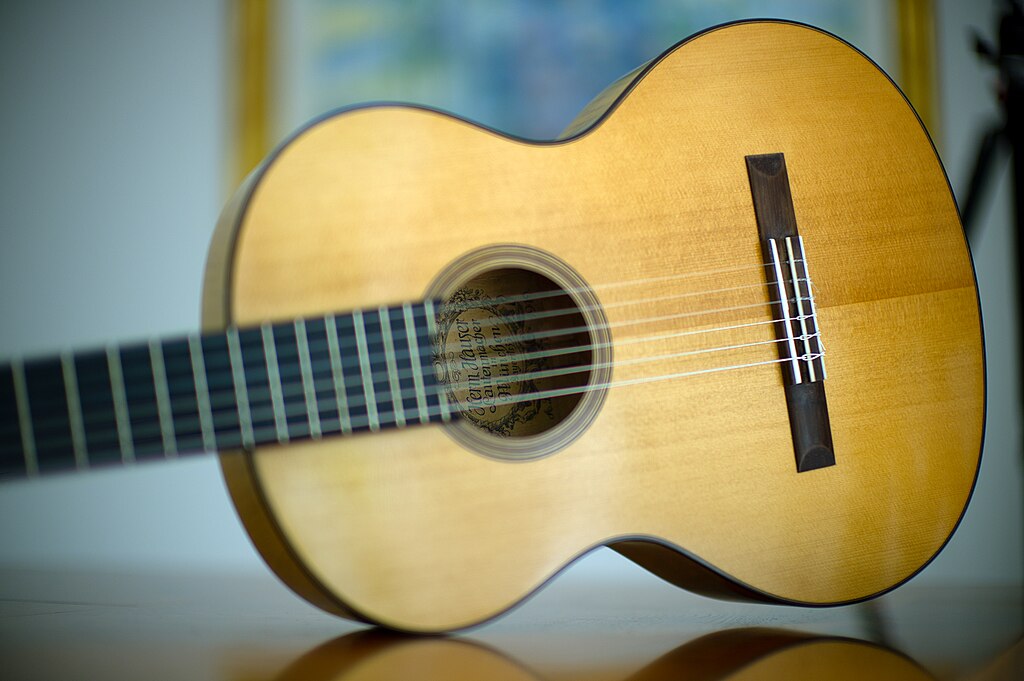
Crafted by German luthier Hermann Hauser I, this 1937 guitar gained fame through its association with classical guitarist Andrés Segovia. His work bridged the gap between German and Spanish guitar-making traditions, creating a model that combined durability with rich tonal resonance. It features a cedar top and rosewood back and sides, which enhance its warm, balanced sound. His craftsmanship became widely recognized after Segovia praised his work, leading to an increase in demand for Hauser guitars. This particular guitar, with its clear, resonant voice, influenced modern classical guitar design. Its detailed construction and powerful sound have made it one of the most sought-after classical guitars.
Orville Gibson L-1 Guitar

This 1926 Gibson L-1 is one of the earliest models from Orville Gibson, founder of the Gibson Guitar Company. Known for its distinctive round lower bout and carved top, it was part of Gibson’s pioneering approach to acoustic design. His designs, incorporating violin-like carving techniques, were revolutionary for their time, making the guitars louder and more durable than traditional models. It became especially popular among blues musicians for its rich, resonant tone. By using mahogany back and sides with a spruce top, it combined warmth and clarity that defined early American folk music. The L-series, including the L-1, played a role in Gibson’s legacy as a premier American guitar maker. This piece remains a cherished item for collectors and represents the start of Gibson’s acoustic legacy.
Antonio de Torres Guitar

Antonio de Torres, known as the father of the modern classical guitar, created this historic guitar in 1859. His work revolutionized guitar construction by focusing on a larger body and a fan-bracing system, enhancing the instrument’s volume and tonal quality. It is celebrated for its bold projection and balanced sound, qualities that remain foundational in classical guitar design. His guitars attracted performers and composers, setting the standard for Spanish guitar craftsmanship. This particular guitar, crafted in Spain, became a model for luthiers worldwide. His influence on the shape and sound of modern guitars has been lasting and profound.
The Stauffer Martin Guitar
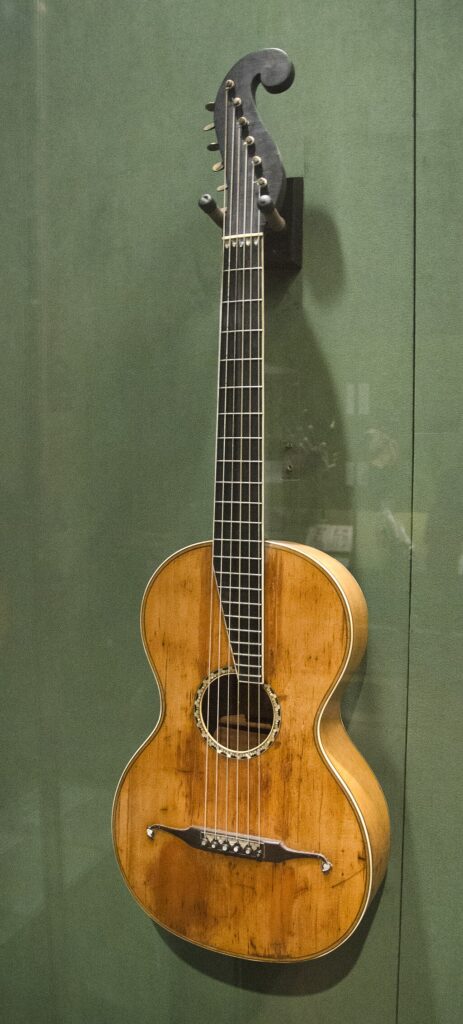
Crafted in 1834, the Stauffer Martin guitar is among the earliest creations of C.F. Martin Sr., who would later establish one of the most influential guitar brands in the world. This instrument features the unique Stauffer design, with an adjustable clock-key neck, allowing fine-tuning adjustments uncommon in guitars from this period. Its body is crafted from flamed maple with ebony and ivory inlays, highlighting his dedication to aesthetic and structural craftsmanship. This model represents his early experimentation in guitar design, combining European influence with his unique ideas. This guitar has a distinctive sound, offering a resonant tone that appealed to both classical and folk musicians of its era. His work with Stauffer-style guitars would influence his subsequent models and shape his reputation in guitar-making circles. This guitar, now showcased at the Martin Guitar Museum in Pennsylvania, is a testament to his early contributions to guitar craftsmanship.
René Lacôte Guitar
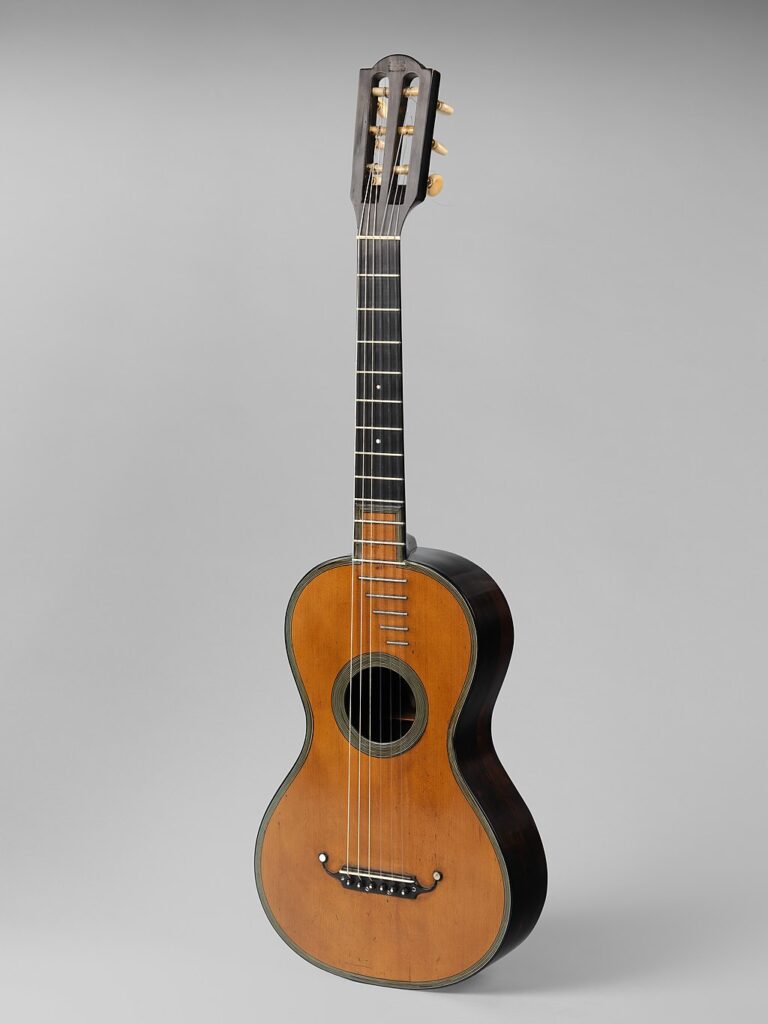
René Lacôte, a French luthier, was instrumental in the early 19th century for developing guitars that influenced the modern classical guitar design. Created around 1825, his guitars featured innovations like fixed metal frets and slotted headstocks, contributing to better tuning stability and projection. His instruments, often small but with powerful bracing systems, had loud, clear sounds suitable for public performances, unlike the quieter parlor guitars. His craftsmanship included finely tuned bracing systems, making his guitars remarkably resilient and easy to play. He was known for his collaboration with guitar virtuoso Fernando Sor, who praised the tone and quality of his instruments. It highlights the shift toward robust construction and increased projection that set the stage for later classical guitar designs. His work left a lasting legacy in French lutherie, influencing European guitar styles for years to come.
José Massague Guitar
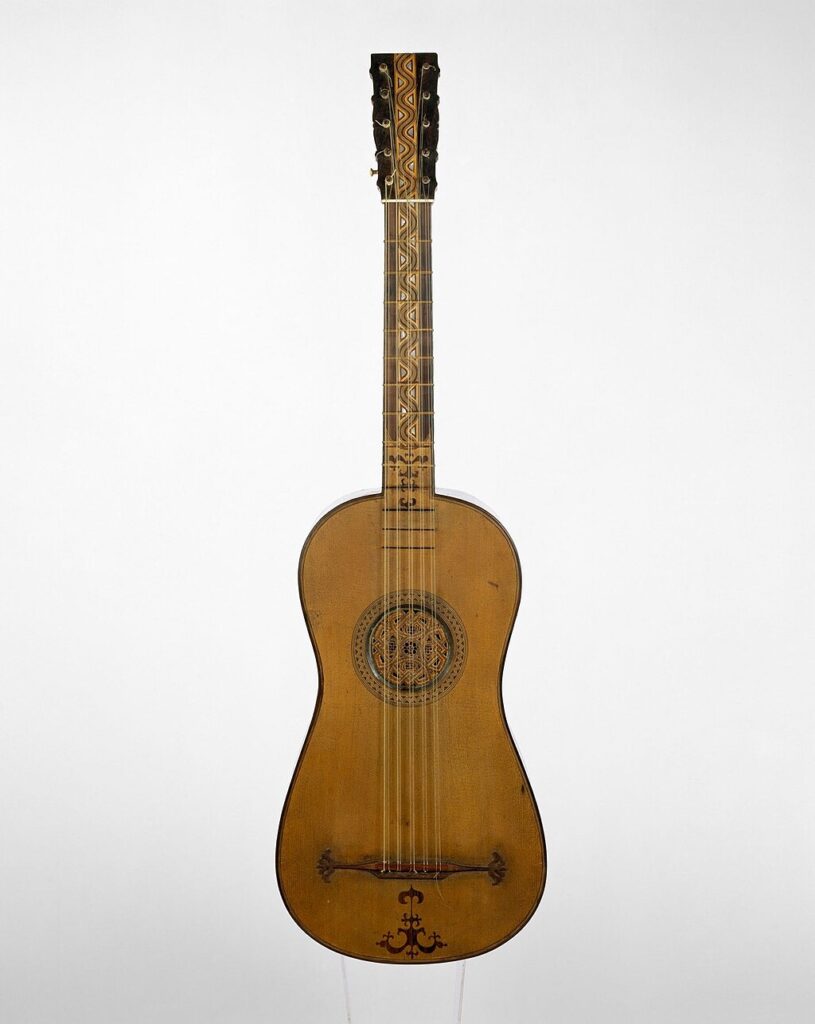
Built around 1755–1760, the José Massague guitar is an elegant Spanish instrument made by luthier José Massague in Barcelona. Known for its five double-course strings, it exemplifies the traditional Spanish guitar design popular in 18th-century Europe. Massague, part of Barcelona’s carpenter guild, crafted this guitar with a rosewood fingerboard and intricate mother-of-pearl inlays on the headstock, adding a luxurious touch. Its robust yet delicate structure allowed it to produce a rich, resonant sound that became desirable among musicians of the period. His work, though rare, is celebrated for its contribution to Spanish lutherie and early guitar-making. His guitars, often elaborately decorated, reflect the European taste for opulent designs and musical refinement. Today, his surviving works are treasured in museums for their historical significance. It remains a valuable relic of Spanish guitar craftsmanship, showcasing the artistic and musical heritage of the 18th century. Its beauty and quality continue to captivate guitar enthusiasts and historians.
Joachim Tielke Baroque Guitar

Created around 1695 in Hamburg, Germany, the Joachim Tielke baroque guitar is a masterpiece of early guitar craftsmanship. Tielke, renowned for his elaborate instrument designs, crafted this guitar with a body featuring ornate decorations in ebony and ivory. His craftsmanship is particularly noted in the intricate inlay work surrounding the guitar’s soundhole and edges, as well as the alternating wood patterns on the back and ribs. Unlike the six-string guitars of today, it features five courses of double strings, providing a unique, resonant sound. His baroque guitars are known for their elaborate decoration and attention to detail, making them highly valuable to collectors. This guitar reflects his influence on early string instruments and his contribution to German lutherie. Its distinct style and baroque design were favored by musicians of the period, showcasing the art of German guitar-making. It remains one of the few surviving instruments from the German baroque period. Its elegance and historical value are celebrated, especially as few of his works remain intact.
Voboam Guitar
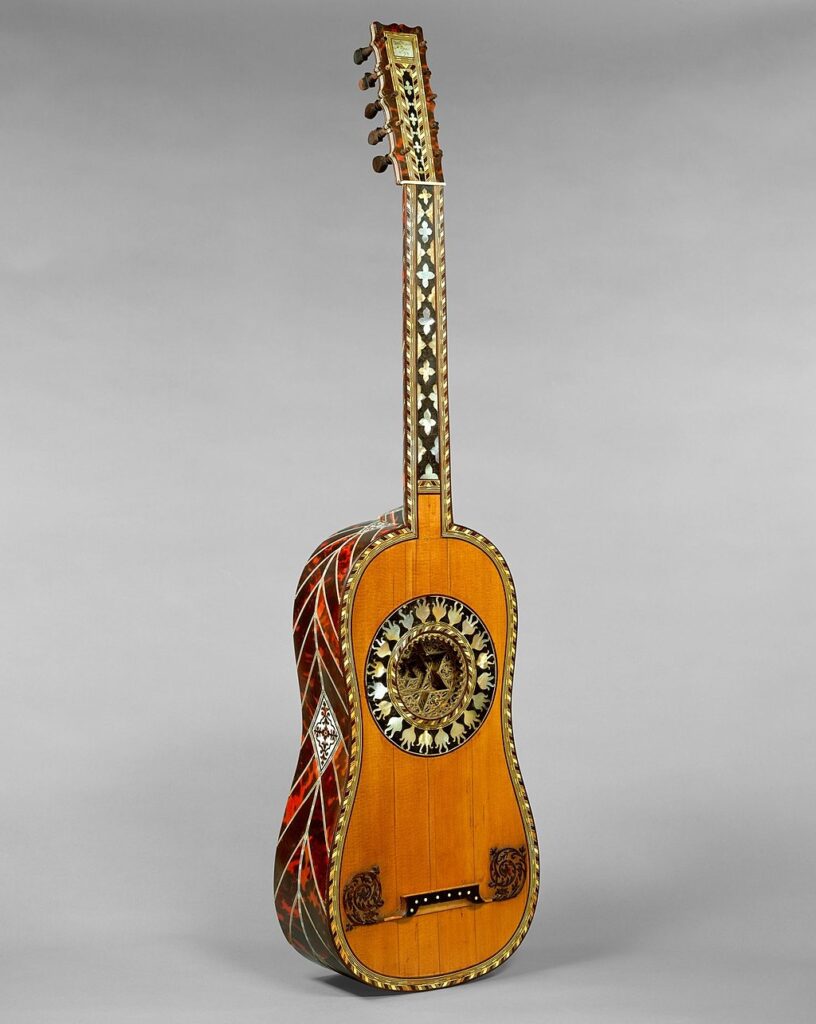
Created around 1680 by René Voboam, the Voboam guitar represents the pinnacle of French baroque guitar craftsmanship. Voboam, a renowned luthier based in Paris, crafted this guitar with intricate rosette designs and decorative patterns, reflecting the baroque style’s artistic flair. Its five double-course strings allow it to produce a rich, layered sound that was ideal for the complex compositions of the period. Its body is adorned with precious materials, including mother-of-pearl and delicate inlays, which were popular among the French aristocracy. This instrument is preserved at the Musée de la Musique in Paris, where it remains an iconic example of baroque guitar design. His work influenced other European luthiers and helped solidify the guitar’s place in French music. It exemplifies the fusion of art and function, appealing to collectors and offering a rare example of 17th-century French guitar craftsmanship.
Matteo Sellas Guitar
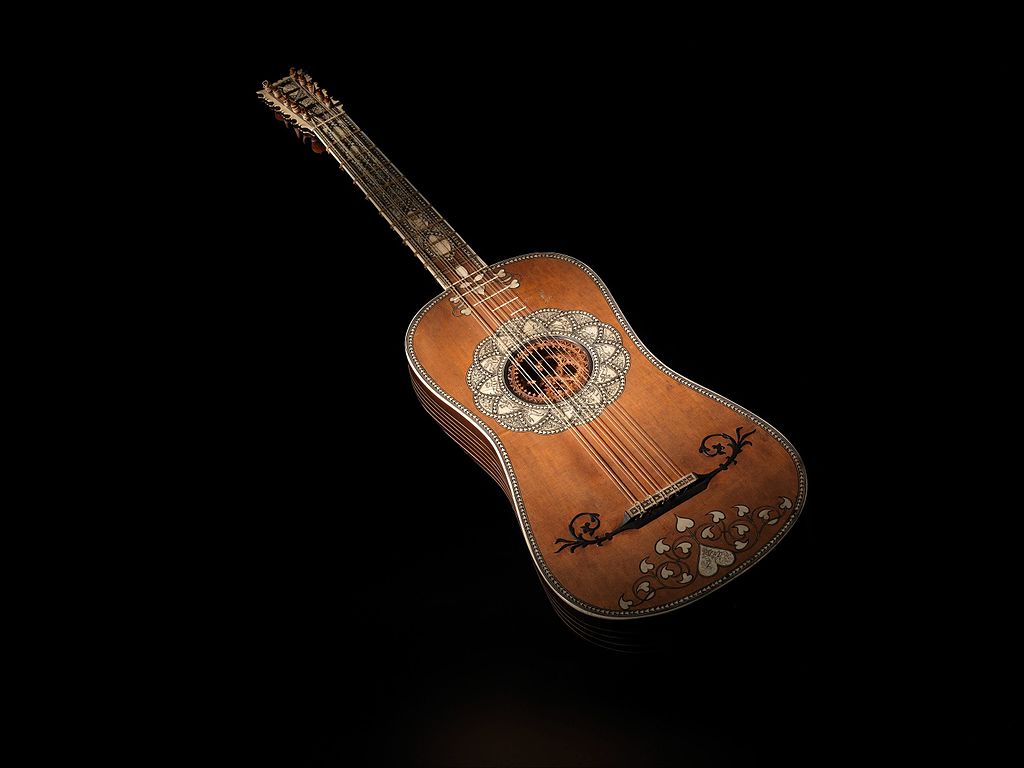
Crafted between 1630 and 1650, the Matteo Sellas guitar from Venice, Italy, is among the oldest surviving guitars with documented provenance. Sellas, a prominent luthier in Venice, was known for his expertise in instrument-making and distinct Venetian style. It features a baroque design, with five courses of strings and delicate ornamental inlays around the body, which enhance its aesthetic appeal. Its construction shows Sellas’s mastery over intricate design, especially evident in the scrollwork and rosettes that adorn its body. His influence was significant in Italy and beyond, as his instruments became sought after by musicians and collectors. Unlike modern guitars, this instrument was designed with double strings, giving it a distinctive tonal quality appreciated in baroque music. It exemplifies his impact on early guitar design and the popularity of guitars in European courts. This piece remains a key artifact, showcasing the refinement of Italian instrument-making. His guitars continue to captivate historians and musicians alike, representing a pivotal moment in guitar history. The Metropolitan Museum of Art in New York currently holds this guitar, adding a historical treasure to its collection.
Belchior Diaz Guitar
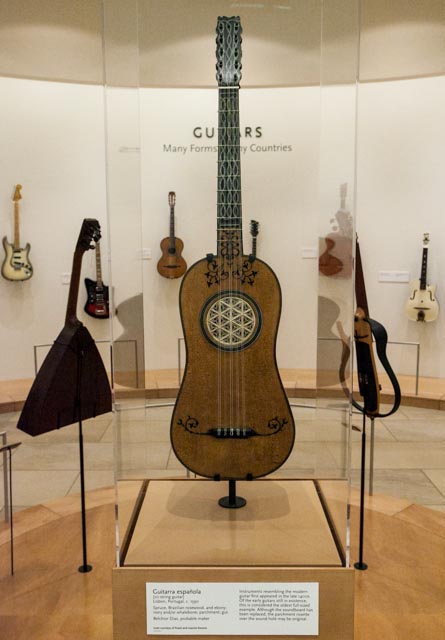
Dating back to around 1590, the Belchior Diaz guitar is one of the earliest known examples of a full-size guitar, crafted by Portuguese luthier Belchior Diaz. This instrument represents the evolution of the guitar from the Spanish vihuela, characterized by its curved waist and five double courses of gut strings, similar to early guitars. Made with gut frets tied around the neck, it features a flush fingerboard and friction tuning pegs, which set it apart from more modern designs. His craftsmanship emphasizes simplicity with a lightly decorated body, although it bears the unique shape and sound characteristics typical of early guitars. Notably, it has a smaller and lighter frame than the contemporary guitar, making it more delicate in construction. This instrument is now considered a prototype for modern classical guitars, demonstrating the early characteristics that would later be refined into today’s standard design. Found in Europe, it remains a rare piece in the history of stringed instruments. Preservation efforts highlight its historical importance and provide insights into early guitar-making practices. Despite its age, it is remarkably intact, providing a tangible link to the origins of guitar craftsmanship. This unique artifact is now cherished as one of the oldest surviving guitars, bridging the gap between ancient stringed instruments and today’s guitar.
This article originally appeared on Rarest.org.
More from Rarest.org
20 Exotic Birds in Danger of Disappearing from Our World

Exotic birds are among the most vibrant and unique species on our planet. However, many of these stunning creatures are at risk of vanishing forever. Habitat destruction, climate change, and illegal poaching have contributed to their dwindling populations. Read More.
14 Rare Gemstones Found Only in Specific Regions
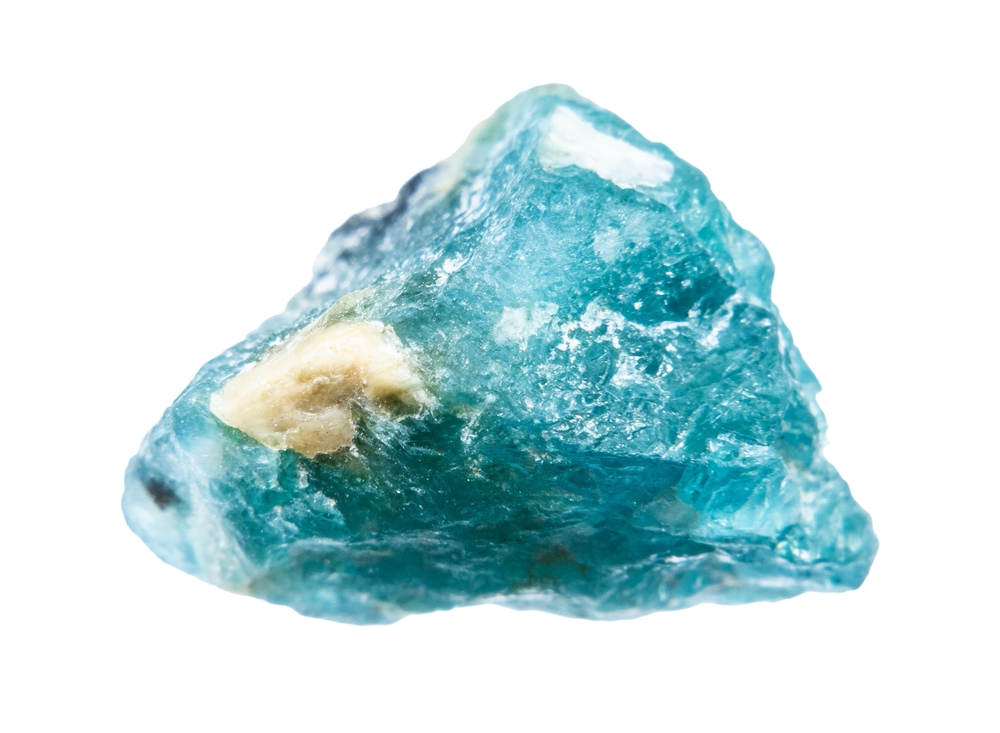
Rare gemstones hold a special allure, not just for their beauty but for their scarcity. Found only in specific regions around the world, these stones are prized by collectors and jewelers alike. The combination of unique geological conditions and limited supply makes each of these gems both valuable and captivating. Read More.
19 Unique Freshwater Fish Thriving in Lakes and Rivers

Freshwater lakes and rivers are home to a fascinating array of unique fish species, each thriving in its own way within these diverse ecosystems. From ancient predators to gentle giants, these fish have adapted to a wide range of environments, showcasing remarkable traits and behaviors. Read More.
